BOTSWANA 2022 TRIP REPORT
Botswana 2022 Trip Report by Gerald O’Brien
After what began in December 2021as a proposed Botswana adventure for October 2022, was finally about to kick into action. The trip convoy would consist of six vehicles with a total of 12 adults, one of which had flown out from the UK to join his uncle for the trip.
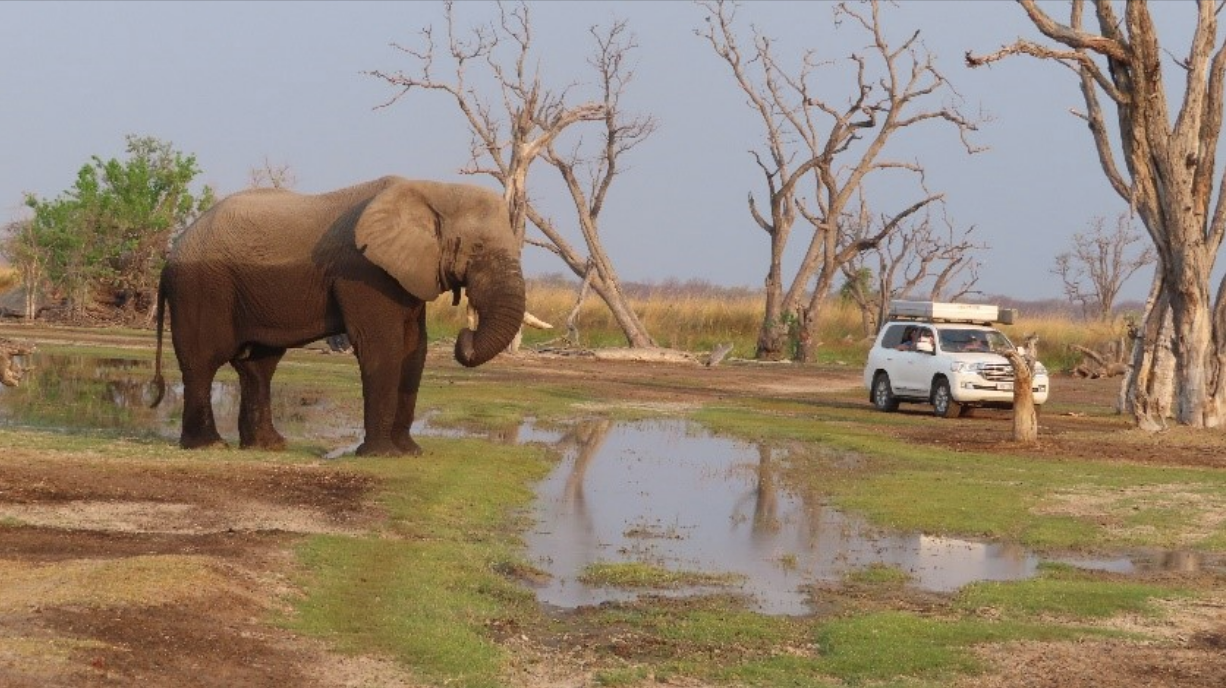
This was going to be a 14-day adventure across Botswana and into the un-tamed and natural wilds of the game reserves. The current outbreak of Foot and Mouth in SA meant that we were limited into what fresh meat, fruit and vegetables could be taken through customs and into Botswana so plan B would click in which meant an initial stop in Malahapye for the first two days and then again in Maun for the remainder of the trip. A good supply of drinking water too, the temperature was going to be in the upper thirties and lower forties for the next month at least. And dehydration could be a real problem if we weren’t adequately prepared for the heat wave.
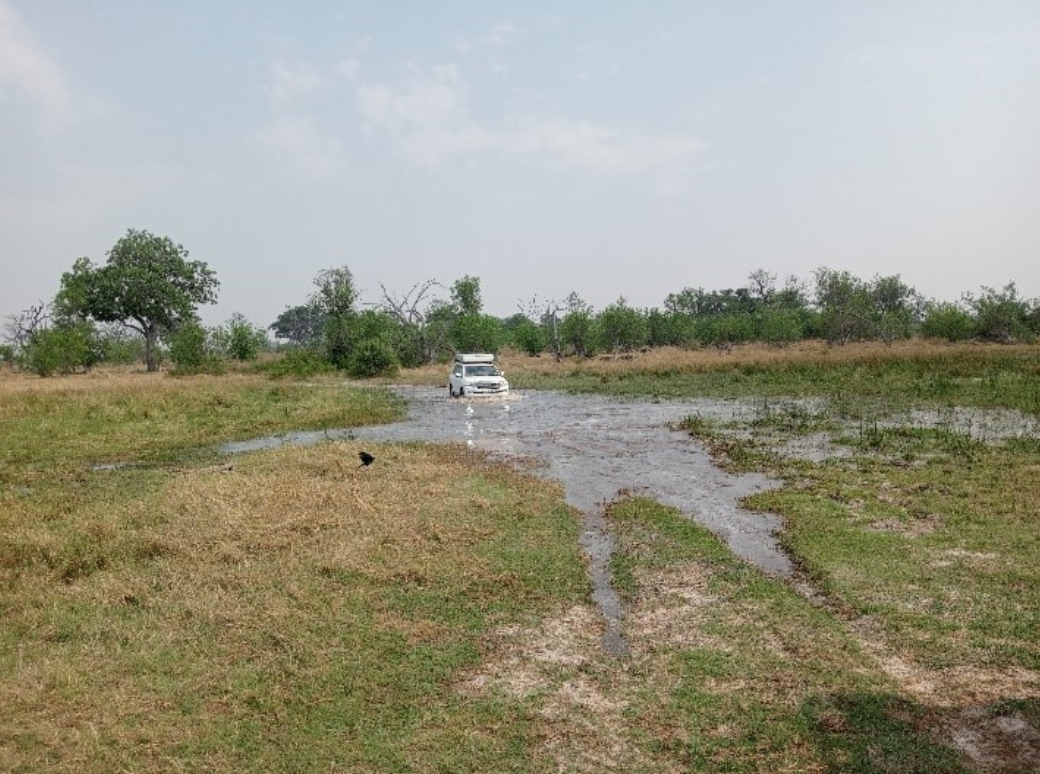
Meeting time was set for 05h00 at the Petro Port just north of Pretoria on the N1 for 3 couples, the rest would meet further on. Fortunately for us, the covid restrictions had been lifted in Botswana and with that the Stockpoort border control post was reopened. Stockpoort border is a quiet out of the way border with no truck and a 60kilometer dirt road on the Botswana side, probably one of the reasons why the post was a quiet and peaceful one. Good time was made, and no one experienced any problems which meat that we were on time for an early check in for our first nights camping at Kahama Rhino Sanctuary just outside Serowe. The Khama Rhino Sanctuary was set up a few decade back as a breeding ground and safe haven for the endangered Rhino population in Africa. Botswana has the distinction of Rhino having twice gone into extension in Botswana, caused by poaching. Khama has turned out to be a very well run and managed sanctuary which has been responsible for releasing the great animals back into the reserves once more. One is virtually guaranteed of spotting White rhino and if it’s your lucky day, then Black rhino too. The birdlife is also fantastic with great sightings of a large variety of bushveld birds, both in camp and on the game drives.
Our first night around the braai fire was enjoyed by all as everyone got to know who their buddies were going to be on the Adventure which lay ahead of us and who we may depend on for help in the more difficult parts. These difficult parts were out there, and they would find us.
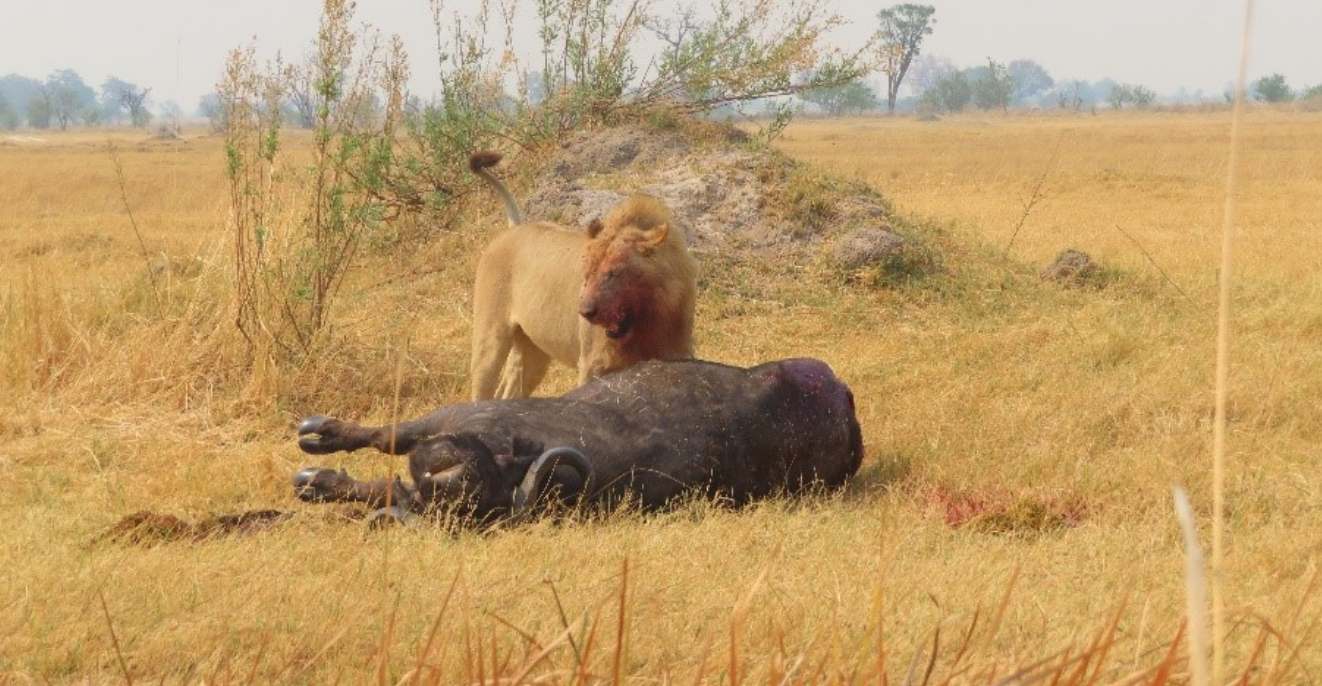
Each morning began with a driver’s briefing for everyone covering the day’s activities, time and distances. Today we were headed for KubU island, which is roughly halfway across the Magadigadi salt pans. Kubu Island, with its estimated 60 baobabs and large boulders and stone artefacts from a bygone era make it an interesting stop over point. Getting to and leaving the island meant travelling across the wide-open spaces and making sure that the vehicle did not stray from the tracks ahead. Although dry on the surface, one does not have to dig down more than an inch or two before finding the damp under belly of the pan. Breaking through the dry surface and sinking down into the under belly is always a possible danger, especially in the wet weather. Our last refuel for the next few days till we reached Maun was at Lethlekane. Our tyres were deflated as we left the tar road just before the final approach to the pan. A midafternoon arrival was the plan, giving us time to set up camp and then giving us time to take a walk out to a good viewpoint for what are usually magnificent sunsets on the pan. By now we had stocked up on ST Louis, the local brew which when chilled, went down very well in the dry heat.
The first day would be a good introduction to the pan and for an idea of things to come with what lay ahead, The second days drive we were going straight across the bigger and main portion and would need to keep moving if we wanted to reach Maun before darkness., today was an awesome drive across the huge open vastness of what was once one of Southern Africa’s great lakes. The dust was super thick in places and with deep ruts to drive in, it made for slow going and at times difficult to see ahead of the vehicle in the thick white dust. We reached Gweta, which is at the edge of the pan in good time, and it was now time for the last 200kilomets of tar to Maun. After good driving by everyone across the pans we were in Maun at least an hour and a half before sunset. We set up camp at Croc Camp which is situated on the banks of the Thamalekane River and around 10 kilometers from the Maun CBD. We were going to be in Maun for two nights, giving us time to fill tanks, Jerry cans and fridges for next 800 kilometers in the reserves The first morning in Maun, the group took an hour’s scenic flight over the Delta area which is a great way of getting a true picture of just how big and amazing the whole Delta area in this desert region really is. To see the game, all the water ways and channels with all the small islands is really special and I would recommend it to anyone going to the region. Life is strange though, we had just spent the last two days of been thrown about in the vehicle for hours at a time with no side effects from anyone, now on an hour’s scenic flight one of the group found it to be too much and was grateful for the brown paper bag.
Maun is in the midst of an expansion explosion with new shopping centers and general construction work going on in many parts of town. Having more options open for the shoppers is aways an advantage, it’s just to find the best places with more to choose from. The town, which is mainly tourist driven took a knock during the covid period, but things are returning to normal once more with many tourists moving through the town’s accommodation hotspots.

After the two days in Maun, we were now packing up and getting ready for an early drive out to Moremi South Gate our end destination being Xakanaxa. We had planned to take the longer route via 1st, 2nd, 3rd and 4th bridges as against straight from South Gate to the camp site. The longer drive covers more area and subsequently better options for good game viewing. We were not disappointed with the longer route; we saw a variety of game which included a large herd of buffalo and an excellent bird count. The trip was not without a bit of action though, upon arriving at 2nd bridge, a group of German tourists had got one of their vehicles bogged down in the river running under the bridge. Two of their vehicles drove over the rickety bridge but the 3rd driver thought that his options of driving through the water looked to be the better as against the flimsy looking bridge. Needless to say, by the time that we arrived, his vehicle was well and truly bogged down and not going anywhere. There were now half a dozen Germans running around the bush in their scants and all looking mighty worried and clearly run out of ideas. It was not an easy recovery, first the winch, then a Hilux pulling alongside the winch, and then eventually a cruiser in tandem with the Hilux and the winch alongside. At that moment, a happier bunch of Germans would not have been found anywhere. Once all the gear was packed away again, we all departed, with our off-road caravans in tow, over the rickety bridge and on to 3rd bridge. Third bridge was in good condition after just recently been repaired after the last heavy rains washed the previous one away last year. The new bridge is good, but it could have been made a pole with wider, it is really narrow, especially when towing. 4th Bridge is the longest and highest of all the bridges and we drove across it quite confidently, but I’m not too sure the same would be said in a few months’ time, some of those poles were hanging on by a thread, just waiting to go floating down the river.
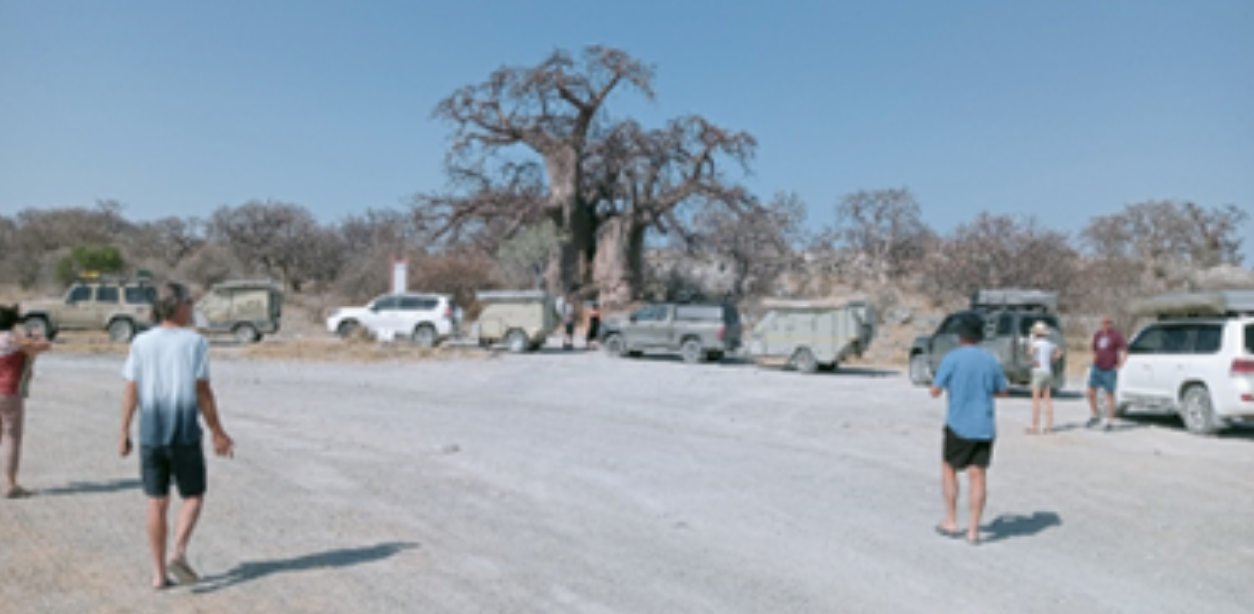
Our camp at Xakanaxa was for three nights, and we would be taking multiple drive outs from there, including a two-hour cruise into the delta, exploring the many different channels and water ways in the area. Moremi is a great place to explore, there are so many different tracks to follow, some leading to deep and muddy water crossings, large waterholes and open plains, a bit of everything for everyone with lots to see. We were fortunate this time around, we saw lions at a buffalo kill where 4 males took a buffalo down and were now climbing into their feast. The birdlife was fantastic and having a really keen birder with us livened things up a bit. Suddenly when you are looking and listening to the birdlife, your day becomes a whole lot busier and before you know it, you are running out of time. The birdlife in the delta region is something special, between the water birds and the bushveld birds there are just so many different species around. Paradise pools is always a favorite sundowner spot, plenty of water around, lots of dead trees and big herds of Red Lechwe favoring the wet areas. There is also a large bat population which hang out in the dead trees during the daylight hours.
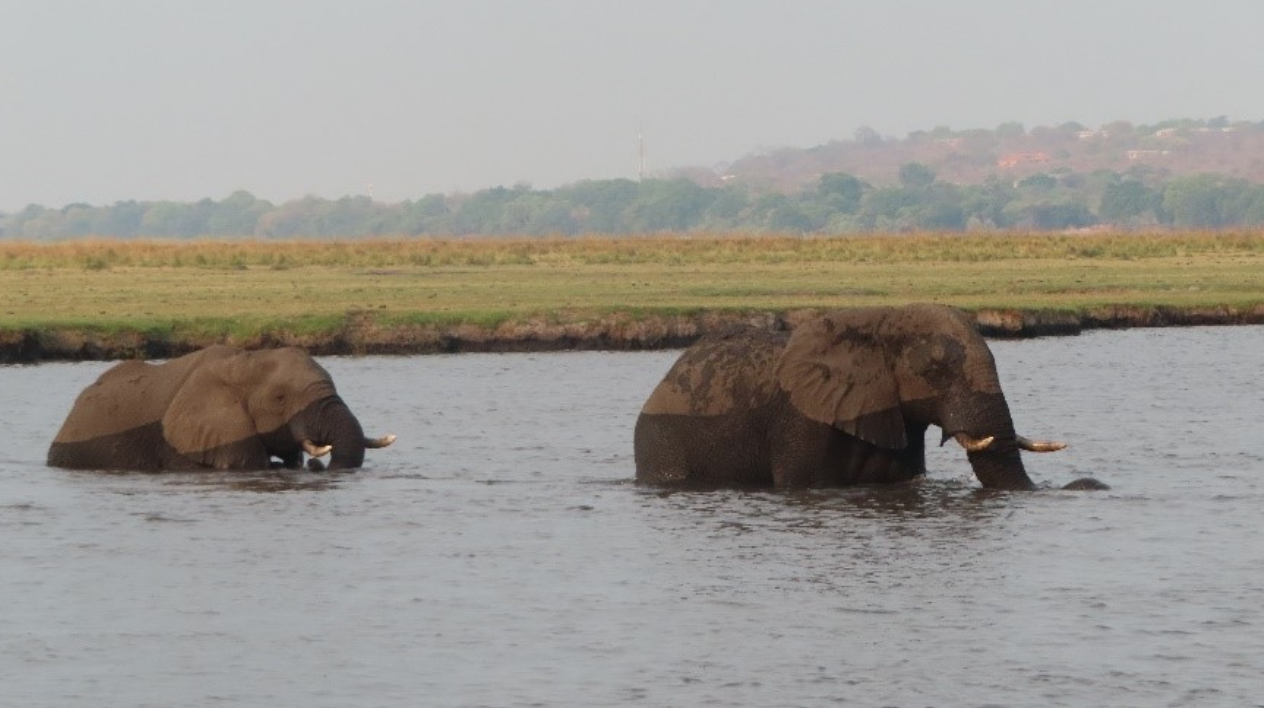
We did a few recoveries amongst ourselves, during out time at Xakanaxa, but that’s always par for the course when there is so much water around. but they were fortunately quick and easy ones with a snatch strap and a shackle or two. The local Ellies never let us down either as they slowly took their usual route along the water’s edge which was also where we happened to be camping. It’s really special having these majestic wild animals passing through peacefully and although very weary of our presence, never showed any signs of aggression or interest in us. Give then their space and they are happy.
From our camp on the delta’s edge, we were now headed for a contrasting camp site in the Chobe National Park at Savuti. Savuti is situated in a dry area with no natural water unless of course there are good rains. The drive to Savuti takes almost an entire day although it’s a drive of only around 180kilometers. We encountered water crossings in Moremi and once wed crossed into Chobe, it was thick dry sand making the going slow, hot and tiring. It was an eventful drive and not without the need for the Snatch strap to show its magic once again, on a few occasions in fact. The soft sand was quite deep in places and negotiating the tracks required constant concentration by the drivers to keep the vehicles momentum going. Sometimes the concentration slackened off a bit which meant another recovery demo to get things going again
Savuti Is a camp with a certain attraction that other places do not have. The strong flowing Savute channel dried up in the early eighties and has never flowed again, other than for a short period around 6 years back. At present there are a number of waterholes where the bore hole water is pumped into which keeps the wildlife going during the long dry months. Although Savuti is a dry area, there is still a lot of game around if you look for it. Between Moremi and Chobe, we were fortunate to see eighteen different lions, 4 of which were young cubs. Driving up the Dry Savute channel, it is the only place that I have ever witnessed elephants laying down. They tend to use the sloping sandy riverbank to aid them in lying down and then getting up again. The Baobab Forest and the lookout points are also places worth visiting. The forest has around twenty of the big and old trees together on a small rocky outcrop, whilst the viewpoint requires that you drive up a rather steep rocky hill to get the viewpoint at the top. Once there the 360deg view gives an awesome sight of the reserve. The evening campfires out in the open with the starlit skies overhead and the days war stories with a great group of overlanders is what makes his Savuti region such a great place.
After our 3 nights at Savuti, we were headed further north to Kasane to our camp site at Torro Lodge. A very neat and tidy site with separate ablution facilities for each site. The day was a bit rushed as we had a long way to go and we had to be in camp in time to be collected for the 3 hour sunset cruise on the Chobe River. We usually refer to it as the Booze Cruise, and usually that is the more appropriate name for it. We were luck in that we saw quite a bit from the boat, both on the island and the riverbank. Some really large Crocs in those waters and I’m sure that they take full advantage of the animals swimming to and from the island. The following morning, we split up for the day, some went on a tour to the Vic Falls whilst others went Tiger fishing for a few hours. I had replacement number plates made up for those If you have not previously been to the Vic falls, then this is a good opportunity to do so. One can take an organized tout for the day from a hotel at very reasonable costs, and you are driven all the way there and back again. This speeds up the border crossing times and reduces the costs as if you were to take your own vehicle.
A good day was had by all and fortunately we had the campsite to ourselves that night. This was our last night together and after an awesome two weeks together, it was time to unwind. We did this most nights around the campfire, but tonight was different, it was our last night together.
We had a fantastic time together, and thanks to everyone for making it that way. Hopefully the memories will linger on for years to come.


